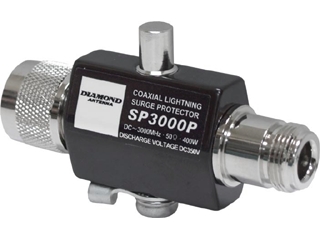owl9704a
Member
Ok people I need some clarification here. I have been playing with listening to public service radio since 59. My first radio was a Hallicrafters Civic Patrol, 30 mto 50 mz model. With who remembers what for an antenna. And since then i have probably had more scanners than I could put in a truck. Now I have 4 SDS 200's, an SDS 100 and a 536. all with every option available. I have recently decided to upgrade my antenna from the old Tram to a Diamond and a DPD unity I think, it has not arrived yet. ANd I have again changed all of my coaxes. I am now using LMR400 with type N connectors since they say the pl259 is not goods for higher frequencies. Since when? And i have been looking for a good lightning arrestor but no matter where I look there is not one available that covers the entire scanner range. I can find them for VHF 150 band and UHF 450 and some that cover 700 to 900 and some that cover from 900 to 2000. But I have yet to find one from any major supplier that covers everything these scanners are capable of. And just for the fun of it who decided that we needed to use LMR400 for a receiver antenna as opposed to th4e good old RG8? And what is with this N connector stuff now? Now I have several Harris that use that connector exclusively but they are 100-watt P25 units. I have just been getting confused with all of this new stuff and it is really making this one expensive hobby.
Ok so does anyone know where to get a full coverage lightning arrestor? And does anyone know where all of the information I have read in posts on so many forums comes from about this cable and connector stuff? We have used PL259 connectors for decades and they always worked. And we used RG8 and 58 for years and it worked. Did this stuff come from some engineer with a computer or did it come from someone that actually took several units and hooked them to identical antennas and used different cables? I guess when you get older it is just hard to figure out some of these new ideas that are supposed to be better. If anyone has some help for me I would greatly appreciate it. This is the only forum that really deals with these units.
Thanks for your time
owl9704
Bob
Ok so does anyone know where to get a full coverage lightning arrestor? And does anyone know where all of the information I have read in posts on so many forums comes from about this cable and connector stuff? We have used PL259 connectors for decades and they always worked. And we used RG8 and 58 for years and it worked. Did this stuff come from some engineer with a computer or did it come from someone that actually took several units and hooked them to identical antennas and used different cables? I guess when you get older it is just hard to figure out some of these new ideas that are supposed to be better. If anyone has some help for me I would greatly appreciate it. This is the only forum that really deals with these units.
Thanks for your time
owl9704
Bob


